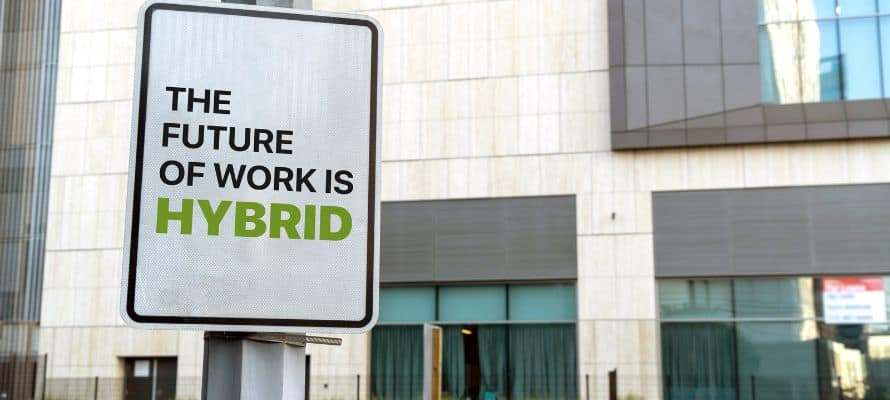
By now, we’re all fairly familiar with the hybrid workforce model. But the topic of hybrid working is also surrounded by a lot of myths and misconceptions. We want to set the record straight and talk about the rise of what might be the best working arrangement for the modern workforce.
In this blog, we’ll explore the hybrid workforce model, its key elements, the most common hybrid work models, and the benefits it brings to both companies and employees. Let’s start with the basics.
The hybrid workforce model is a work arrangement where employees spend a portion of their work week in an office environment and the other part of the week working remotely.
This model recognizes that not all tasks require physical presence in the office and offers employees the freedom to choose where and when they work. It also taps into the best benefits of both in-person and remote work, giving employees better flexibility without sacrificing collaboration.
Perhaps, that’s why 63% of high-growth companies use a hybrid workforce model.
With the hybrid workforce model, companies can tap into a larger talent pool, retain top talent, and provide employees with a better work-life balance.
So, what makes up the hybrid workforce model? To successfully implement a hybrid workforce model, businesses need to establish certain key elements.
Hybrid working can take a variety of forms, offering your business flexibility when adopting this type of work arrangement. The three most common hybrid work models are:
Because hybrid work models are still relatively new at a large scale, there are a lot of myths surrounding the topic. Let’s talk about the facts:
The truth is, while some individuals might feel that being in an office makes them most productive, studies are showing that’s not necessarily the norm.
An Economist survey found that face-to-face interruptions from colleagues was the biggest distraction at work according to 34% of respondents.
The same survey found that 36% feel more focused at home.
Many employees who have gotten a taste for remote work, want to remain working remotely full-time. But actually, 68% of American workers say hybrid is their preferred work model.
Stanford researchers found something similar. Their research found that 55% of workers want hybrid, 25% want to be fully remote, and 20% want to work only in the office.
If you want to transition from remote work to hybrid, you’ll likely be more successful than you think. But forcing a return to office might still be a bad idea because remote work offers more equity to your diverse workforce.
This is only true if you completely ignore and disregard employees who are remote. But if you make an effort to communicate with hybrid employees and offer them the support they need, your culture can actually thrive.
Gallup research has found that engagement levels are actually highest among hybrid and remote employees compared to their in-office counterparts.
The numbers don’t lie. The hybrid workforce model, in any form, will help your employees feel more engaged and productive at work. And that pays off in a major way for your bottom line.
It can lead to less burnout and more innovation.
Better flexibility means less stress, which means fewer sick days.
You also make your company stand out from competitors who might be stuck on a return to office agenda.
But remember, effective implementation of a hybrid workforce model relies on utilizing the right tools to enable seamless communication, collaboration, and productivity both in and away from the office.
Start investing in robust project management platforms, video conferencing software, and mobile-friendly internal communications solutions (like theEMPLOYEEapp).
By leveraging the right tools, you’ll bridge the physical and virtual divide, ensuring that remote and in-office employees feel connected, aligned, and supported in their work.
[optin-monster slug=”gqorn0natkqgyrtjvr6i” followrules=”true”]